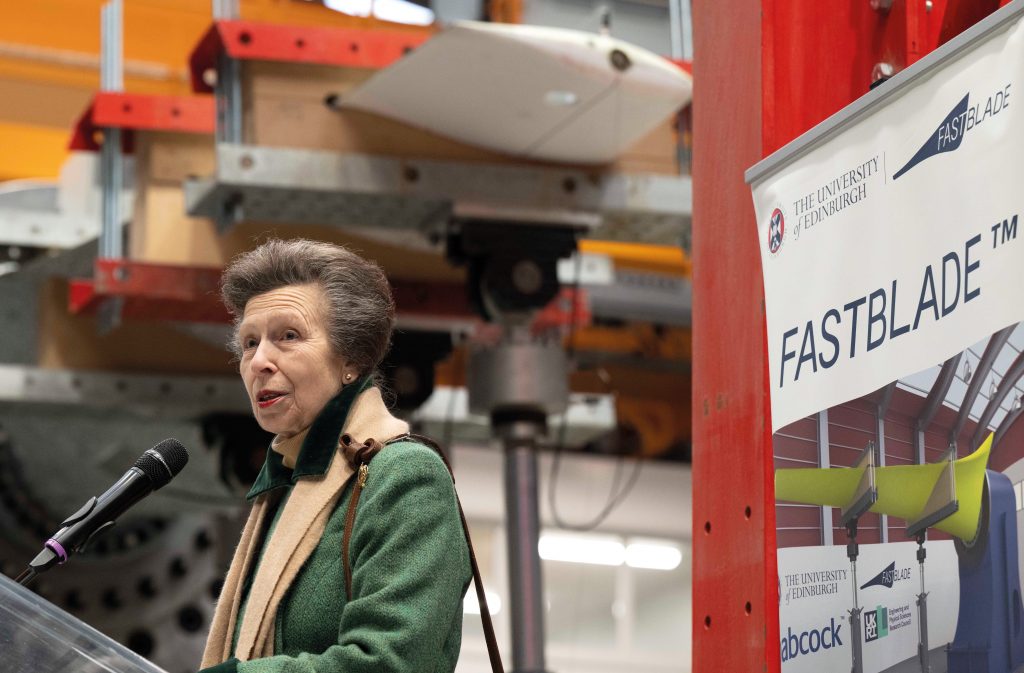
Photo credit : Neil Hanna
A project aiming to maximise tidal energy generation has been launched in the presence of Her Royal Highness, The Princess Royal, at the University of Edinburgh’s FastBlade facility.
The Princess Royal, who is also Chancellor of the University of Edinburgh, visited on Tuesday 17 January to meet colleagues from the testing facility and partners of the new MAXBlade project.
The €10 million project – funded by the European Union and UK Research and Innovation – aims to deliver a range of innovations to improve the performance of tidal turbines and reduce costs.
It will investigate the full lifecycle of tidal turbine blades, from materials, manufacture and operation, to decommissioning and recyclability. The project’s long-term aim is to ensure the European composite sector becomes the international leader in tidal blade manufacture.
The project plans to increase the area harnessed by Scottish tidal technology company Orbital Marine Power to generate power – known as the rotor swept area – by 70%, to more than 1,000 square metres.
MAXBlade will increase the length of the turbine blades from 10 to 13 metres – making them the longest of their kind in the world. The team says that boosting blade length will have the single greatest impact on reducing the cost of tidal energy.
Modelling by the University of Edinburgh’s Institute of Energy Systems estimates £40bn could be generated for the UK economy by harnessing wave and tidal energy. The project will involve a two-year design and development phase, followed by an 18-month build, during which blades will undergo advanced structural testing at FastBlade.
The technology will then undergo two years of real-world testing at the European Marine Energy Centre (EMEC) in Orkney.
Professor Conchúr Ó Brádaigh, Head of School and Chair of Materials Engineering at Edinburgh University, said: “The University of Edinburgh is delighted to be a partner in the MAXBlade project, where we will demonstrate the unique rapid testing capability of the FastBlade facility. This will help the tidal energy industry to de-risk their ongoing turbine developments and provide low-cost, reliable renewable energy to the grid. We will also lead the development of thermoplastic resins in MAXBlade and the circular economy roadmap needed for future tidal blade manufacturing and recycling.”

